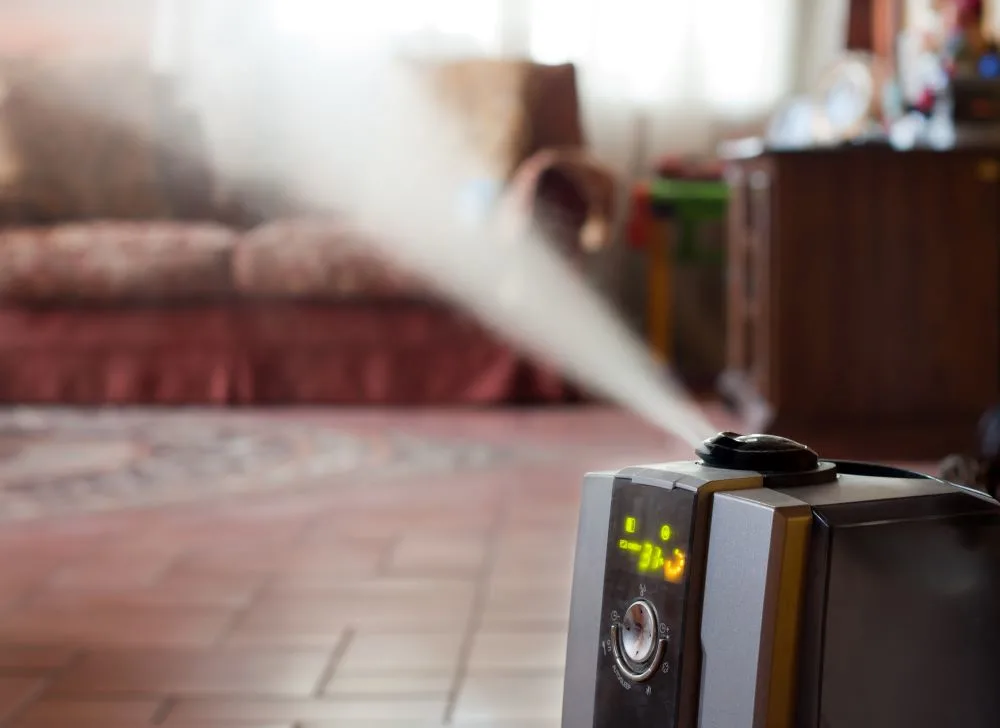| Reme Halo Pros | Reme Halo Cons |
| Can eliminate some viruses, bacteria, and mold | Units produce an odor. |
| Ion-binding makes pollutants larger and easier to clean up | Many reviews say the device fails before its 2-3 year life expectancy |
| High ion output makes it more adept at pollutant neutralization and removal | Ozone is released into the home and may cause short-term and long-term health effects |
| Placed in HVAC system for widespread effectiveness. | Mixed reports of effectiveness |

Ions from Reme Halos neutralize some viruses, bacteria, and mold. The design allows effective filtration. Reme Halos produce high amounts of ions, making them more effective models. They can’t remove VOC odors. They produce odor and ozone (unhealthy). There are mixed reports on effectiveness and durability.
Reme Halo Pros
Ions Neutralize Many Viruses, Bacteria, and Molds
The culprits behind poor air quality, such as viruses, bacteria, and molds, can negatively affect your breathing as well as worsen pre-existing respiratory conditions such as asthma.
One type of ion used by the Reme Halo is ionized hydroperoxide. Ionized hydroperoxide has the capability to neutralize fungus spores, bacteria, viruses, and yeast. This is because ionized hydroperoxides destroy the carbohydrates, lipids, and proteins of these compounds, killing and neutralizing their effects as air pollutants.
Not only do the negative ions neutralize small viruses, bacteria, and molds, but the ozone produced as a byproduct by the Reme Halo can also inactivate viruses, limiting the spread of viruses in areas like hospitals.
Improved Filtration Compared to Mechanical Purifier
The Reme Halo is an air ionizer, which means that it releases ions that attach to pollutants and make them easier to clean up since they are larger. The binding and disposal of pollutants made possible by the Reme Halo can drastically improve air quality.
This differs from mechanical purifiers whose filtration is largely passive and not as streamlined as air ionizers like the Reme Halo.
The ions used by the Reme Halo include ionized hydroperoxides, superoxide ions, and hydroxide ions, which are all unharmful to humans and animals.
The way this works is the negative ions attach to these microscopic particles and give them an electric charge. This electric charge causes these particles to cling together, making them easier to clean up as they land on your home’s surfaces or on the metal collecting plate on your Reme Halo.
High Ion Output
The Reme Halo is developed to have a higher ion output than its predecessors, which therefore makes it more efficient at neutralizing viruses, bacteria, and molds as well as filtering the air faster.
A higher ion output means more pollutants are bound to the negative ions, causing large clumps of pollutants to form. Large clumps are easier to pick up.
With more ionized hydroperoxide being released, more mold, bacteria, and viruses can be neutralized and at a faster rate.
Overall, a high ion output means a more efficient air purification process and better air quality.
Reme Halos Are Installed in the HVAC System
Reme Halo units are installed into the HVAC system, specifically in the supply plenum before the damper. This placement is ideal because it means that the effects of the air purifier are not just limited to one room. Instead, the ionized air is moved through the house into all rooms that are supplied by the HVAC system.
Reme Halo Cons
Reme Halo Units Produce an Odor
Although the usage of a Reme Halo can significantly improve the quality of your air, it may affect the smell of it.
This is because of the ozone produced by the UV light in the Reme Halo. The light is critical to the unit’s function, but it splits oxygen molecules into oxygen atoms. These attach to other oxygen molecules to produce ozone, which has a “fresh” or “clean” or “rainstorm” smell.
This odor may not bother some. In fact, there are those that take the “fresh” smell as a sign that their air has well and truly been cleaned of harmful substances.
However, it does bother others. Some don’t like the more earthy smell of ozone. Others dislike the idea that an odorous gas is being produced by a device that is supposed to purify the air.

Furthermore, this smell can build up in your HVAC system when the AC fan is turned off because the Reme Halo is supposed to be left running. This means that the ozone will build up around the unit in the ducts and will be released in higher concentrations when the fan is turned on again.
Several Reports of Premature Unit Failure
In the best-case scenario, Reme Halos should last about two to three years. But this is not always true. There have been multiple reports of Reme Halo units failing before their ideal 2-3 year lifetime is up.
If your Reme Halo air ionizer has premature unit failure within its warranty period, it is likely you will receive a replacement from the manufacturer since premature unit failure is unlikely to be the consumer’s own fault.
It is important to note, though, that the warranty and its period depend on the supplier. For example, let’s say that your Reme Halo fails in a year and a half. One supplier includes a two-year warranty while another only has a one-year warranty.
With this in mind, it’s wise to research different suppliers and find a longer warranty if you are skeptical of this unit’s longevity.
Ozone Released Into Home
Although ionizers are ideal for improved filtration as well as virus, bacteria, and mold neutralization, ionizers can also produce ozone as a byproduct (they are not ozone generators!).
Ozone is triatomic oxygen while the oxygen we breathe in is diatomic. As mentioned above, the light of the Reme Halo has enough energy to split oxygen molecules into two oxygen atoms. These atoms then bind to other diatomic oxygen molecules to create triatomic ozone.
Although ozone occurs naturally, its levels are very low in our breathing air. Higher concentrations of ozone can produce negative short-term and long-term health effects.

According to the Environmental Protection Agency, ozone can:
“Cause coughing and sore or scratchy throat. Make it more difficult to breathe deeply and vigorously and cause pain when taking a deep breath. Inflame and damage the airways. Make the lungs more susceptible to infection. Aggravate lung diseases such as asthma, emphysema, and chronic bronchitis. Increase the frequency of asthma attacks.”
Thankfully, Reme Halos release a very small amount of ozone into the home environment.
Situations under which the ozone byproduct may be more concerning include:
- Pre-existing respiratory diseases, such as asthma.
- The presence of small pets in the home.
- Having several ozone-producing appliances in the home.
Mixed Reports of Effectiveness
The Reme Halo is advertised as an enhanced form of air ionizer that can handle a large number of pollutants, but this device may fall short in a few areas.
Although the Reme Halo asserts that it can handle both normal odors and chemical odors (VOCs, such as from paint, adhesives, and cleaning supplies), some customers claim that the Reme Halo did not effectively remove odors and VOCs.

Air ionizers like the Reme Halo may also fall short in removing particles like pollen, dust, and dander. This is not to say that they are not able to remove these but rather that they are not completely effective in doing so.
Again, some users who suffer from allergies reported that the Reme Halo made no noticeable difference.
Test Results of the Reme Halo
You can read all about the reported effectiveness of Reme Halo units against various pollutants on the manufacturer’s test result page.
When reading these results, remember that they are presented by the manufacturer and are the product of a limited number of studies.
This does not mean the information is biased or incorrect. In fact, the manufacturer enlisted independent labs to test their product, which is already a great bias-counteractive measure. Furthermore, the theory behind how these units work is very plausible.
Sources
https://www.protechac.com/blog/reme-halo-vs-reme-halo-led/
https://www.ncbi.nlm.nih.gov/pmc/articles/PMC6213340/
https://cleanair.camfil.us/2018/02/05/the-hidden-hazards-of-indoor-air-pollution-from-ozone/
https://www.epa.gov/ground-level-ozone-pollution/health-effects-ozone-pollution
http://lafenv.com/wp-content/uploads/2016/04/REME-HALO2-spec.pdf
https://www.healthline.com/health/what-does-an-ionizer-do#drawbacks


